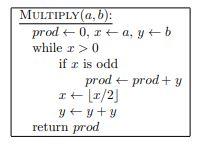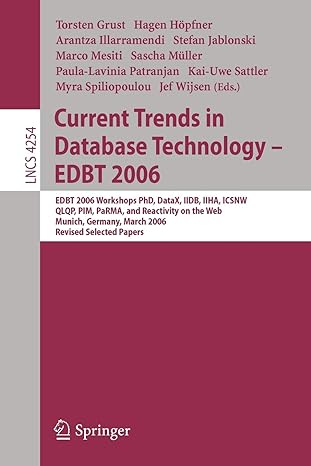Answered step by step
Verified Expert Solution
Question
1 Approved Answer
The algorithm below takes two positive integers input, a and b, and returns product (ab). Use loop invariant to prove the algorithms correctness. You can
The algorithm below takes two positive integers input, a and b, and returns product (ab). Use loop invariant to prove the algorithms correctness. You can use the notations: prod[i], x[i], and y[i] to represent the values of prod, x, and y after while loop executed i times. Consider the quantity prod[i] + x[i]y[i].

Sort the functions listed below from asymptotically smallest to largest. Do not turn in proofs just smallest to largest.

Step by Step Solution
There are 3 Steps involved in it
Step: 1

Get Instant Access to Expert-Tailored Solutions
See step-by-step solutions with expert insights and AI powered tools for academic success
Step: 2

Step: 3

Ace Your Homework with AI
Get the answers you need in no time with our AI-driven, step-by-step assistance
Get Started


